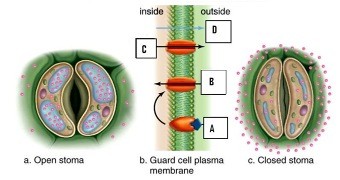At the end of meiosis II, each of the four resulting cells contains
A. one full set of chromosomes, each with 2 molecules of DNA.
B. two full sets of chromosomes, each with 2 molecules of DNA.
C. one full set of chromosomes, each with 1 molecule of DNA.
D. two full sets of chromosomes, each with 1 molecule of DNA.
C. one full set of chromosomes, each with 1 molecule of DNA.
You might also like to view...
A researcher is comparing the species diversity of two islands. Both islands are roughly equal in size. However, one island is much closer to the mainland
She determines that the S value for the island closer to the mainland is ____________ the S value for the island located farther from the mainland. In addition, she finds that the closer island's extinction rate is _______________ the extinction rate on the farther island. A. higher than; lower than B. lower than; higher than C. higher than; the same as D. lower than; the same as E. the same as; higher than F. the same as: lower than
Can you inherit physical traits that your parents acquired during their lifetime?
A) No B) Yes C) Only if it improves survivability D) Only if it improves reproductive success
Explain how abscisic acid promotes the closure of stomates. Identify the molecules involved at each step. A. ________B. ________C. ________D. ________
A. ________B. ________C. ________D. ________
What will be an ideal response?
Please match the term with its description.
Destruction or removal of vegetative pathogens (but not endospores) from inanimate surfaces A) Sterilization B) Disinfection C) Antisepsis D) Asepsis E) Sanitization